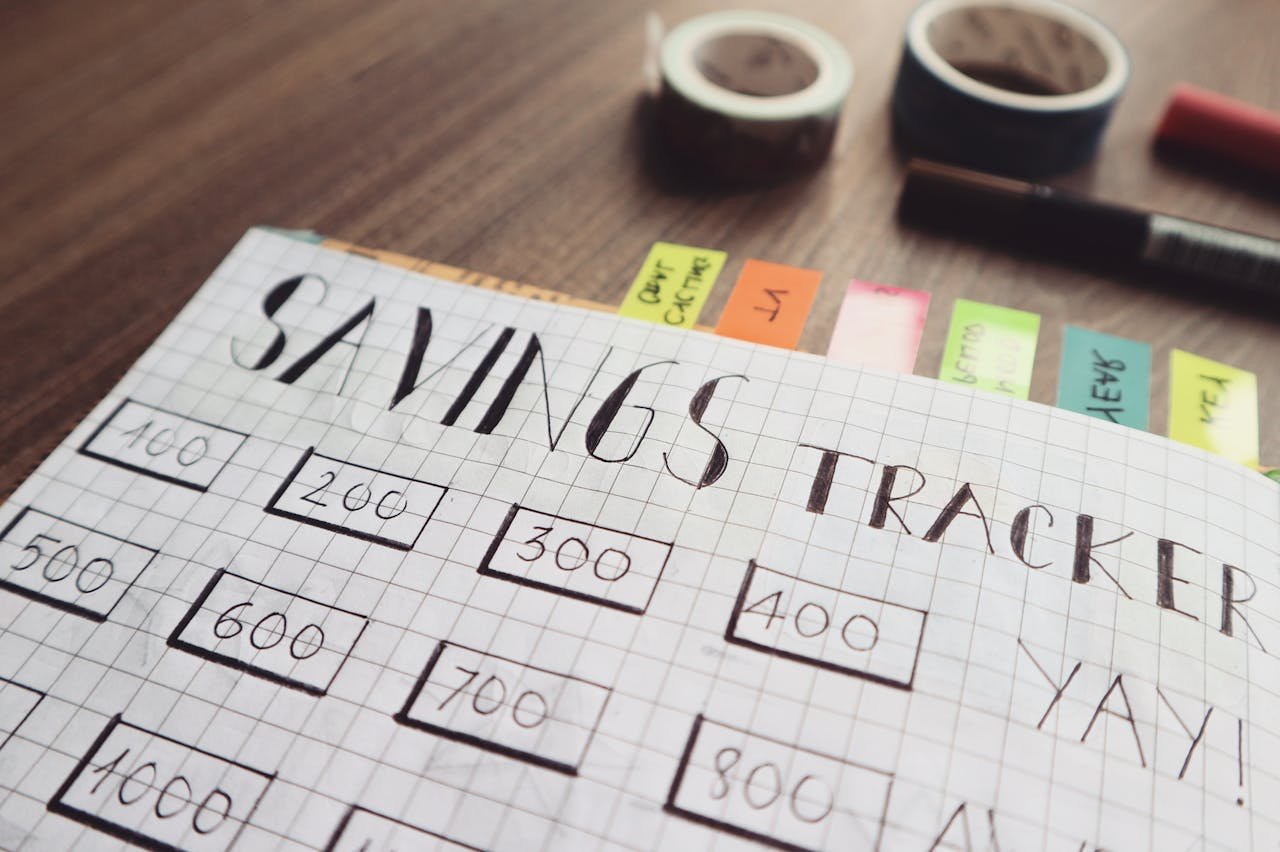Let’s be real for a minute… saving money on a modest income feels like swimming upstream — especially with rent, groceries, gas, and life all competing for your attention (and your wallet). But I’m here to tell you that yes, it is absolutely possible to save $5,000 on a $55,000 salary, even if you’re not a spreadsheet-loving CPA.
I’ve done it. And not because I had a windfall or some hidden side hustle. I just figured out a system, stuck to it, and made a few strategic moves that helped change everything.
If you’re trying to stretch your income and build a real savings cushion, here’s exactly how I was able to accomplish early on — and how you can, too.
Step 1: I Figured Out My True Fixed Costs
Most people think budgeting starts with guessing what they’ll spend this month. Wrong. It starts with clarity.
The first thing I did was audit my recurring expenses — not just rent and utilities, but things like subscriptions, insurance, and automatic charges I’d completely forgotten about. (Spotify + Hulu + Adobe + that random yoga app? Gone.)
CPA Tip: Before you cut the fun stuff, cut the waste. Hidden leaks in your budget will bleed you dry faster than a latte habit.
📌 After this cleanup, I freed up an extra $150/month I didn’t even realize I had. It’s like found money and you can do it, too.
Step 2: I Began to Treat Savings Like a Monthly Bill
I stopped saving “when I could” and started saving like I owed it to myself — which I do.
I set up an automatic transfer of $250 on the 1st of every month right after I got paid. No guesswork. No hesitation. Just gone — straight to my high-yield savings account.
This one habit alone accounted for $3,000 of the $5,000 I saved in a year.
CPA Tip: Automation removes the emotional side of saving . And that’s a good thing when it comes to money.
Step 3: I Used “Found Money” to Supercharge My Savings
Here’s where I got a little creative. I decided any money I didn’t plan for — refunds, gifts, cashback, rebates, side gigs, birthday money, even tax refunds — would go 100% into savings. No exceptions.
Over the year, that added up surprisingly fast:
-
$600 tax refund in March
-
$150 from bank sign-up bonuses (we will discuss this strategy in a different blog post)
-
$220 from selling clutter on Facebook Marketplace
-
$75 in gift cards from surveys/cashback apps (Upside is one of my favorites for gas savings)
-
$250 in birthday/holiday money I’d normally spend (thanks, dad!)
📌 Total “found money” savings: $1,295
CPA Tip: If you act like found money doesn’t count, you’ll spend it like it doesn’t matter. It does.
Step 4: I Created Micro-Challenges for Myself
I turned the process into a game to make it a challenge that I wanted to win.
One month, I did a “no-spend challenge.” Another, I tried cooking all meals at home for 30 days. I even did a “$0 impulse month” — no Target runs, no Amazon buys, no random checkout-line candy bars.
Each month, I’d stash what I would’ve spent in my savings account.
Not every challenge was perfect, but they made saving fun (or at least tolerable). And by year’s end, those micro-wins added up to $705 in bonus savings.
Step 5: I Said No — A Lot
This part wasn’t fun. But it was necessary.
I said no to a few weekend trips. No to dinner out when I’d already meal prepped. No to buying a new couch when mine was still “technically functional (minus the hole Winston had chewed as a puppy).”
The trick was knowing that I wasn’t saying no forever — I was just saying “not right now.”
And because I had a clear goal ($5,000), the sacrifices felt intentional, not punishing.
CPA Tip: A solid “no” today buys you financial freedom tomorrow. It’s not deprivation. It’s small, repeatable doses of discipline that set you on a long term track for financial success.
So… Was It Worth It?
A year later, I had reached $5,000 in savings. That may not sound like much to some people, but on a $55K salary? That was nearly 10% of my income — saved, untouched, and ready for whatever life throws at me.
-
I didn’t get rich
-
I didn’t win the lottery
-
I just built habits that now stuck with me
And now? I’ve got peace of mind. Options. And momentum.
Final Thoughts
Saving money on a modest income isn’t about perfection — it’s about prioritization. You don’t need a financial degree or six-figure salary to make it happen. You just need a plan, some discipline, and a willingness to think differently about what “normal” looks like. And now that I mastered the process when I was making $55K, I just think about how much more I can put aside now that my income has grown.
If I could save $5,000 on $55K, you can, too. Start small. Automate what you can. Say no when it matters. And remember: you’re not behind — you’re building your success one small step at a time.
This post contains affiliate links, which means I may earn a commission if you make a purchase through my links, at no extra cost to you. Please read my disclosure for more information.

